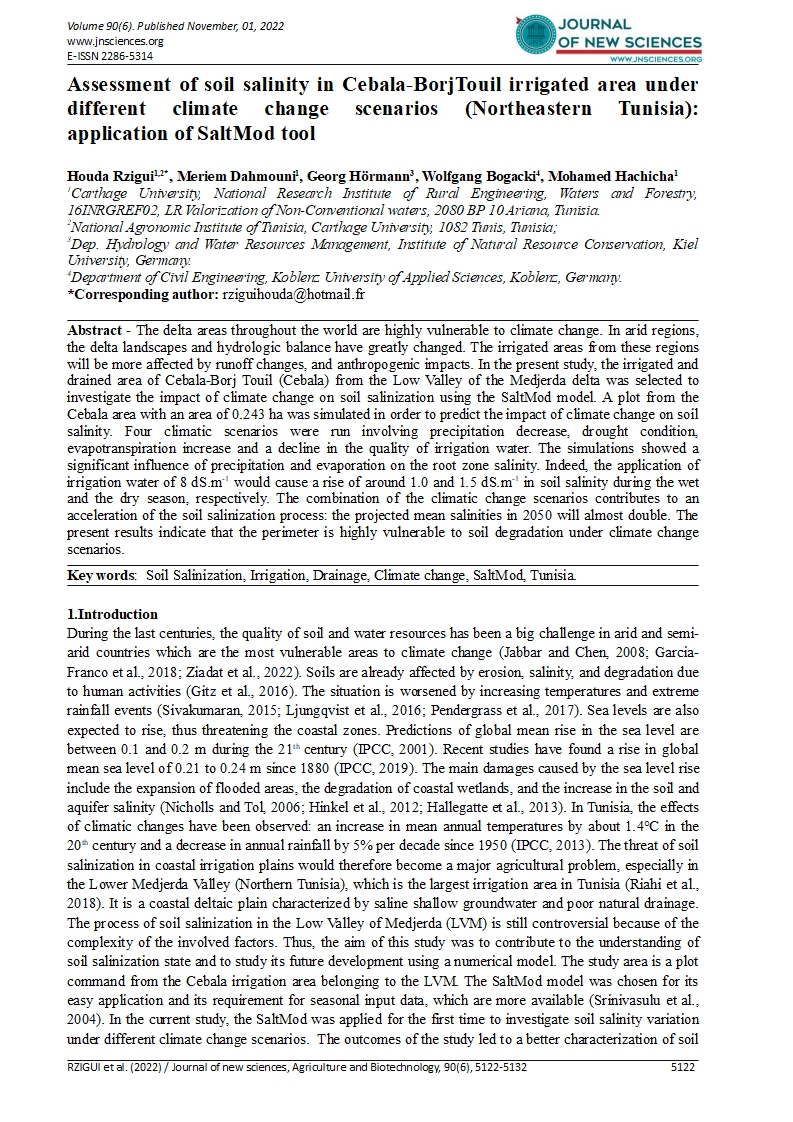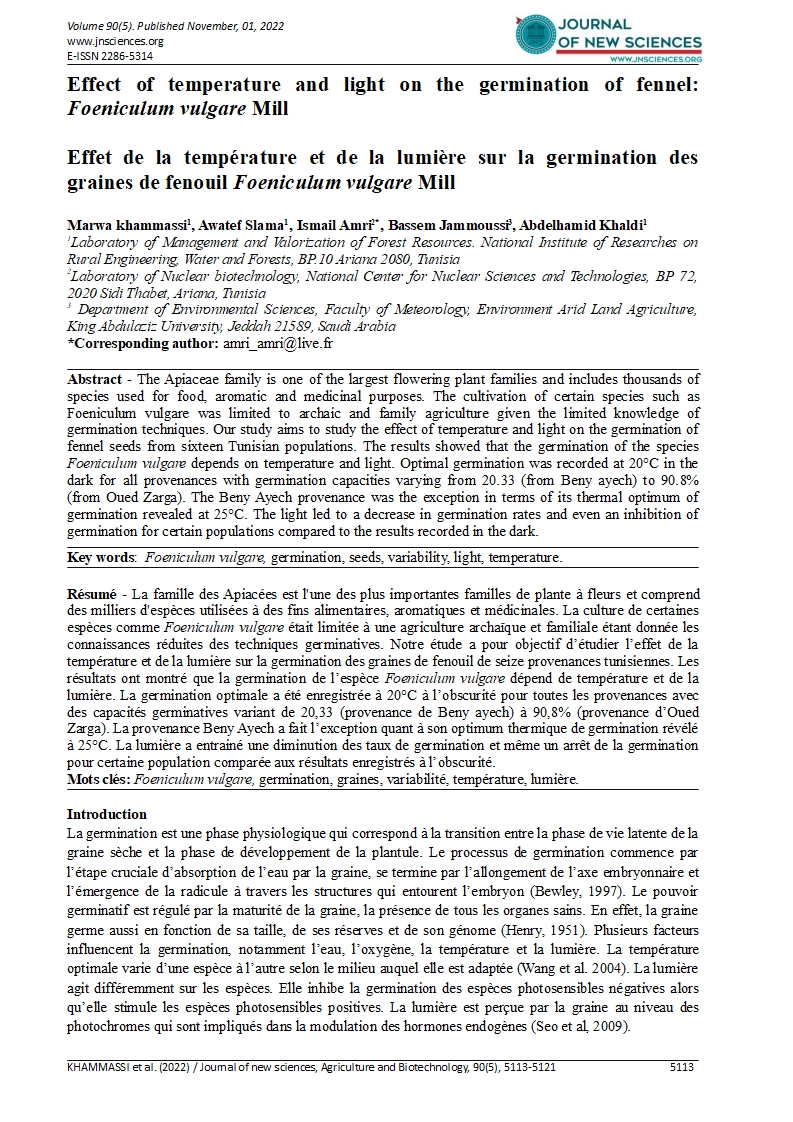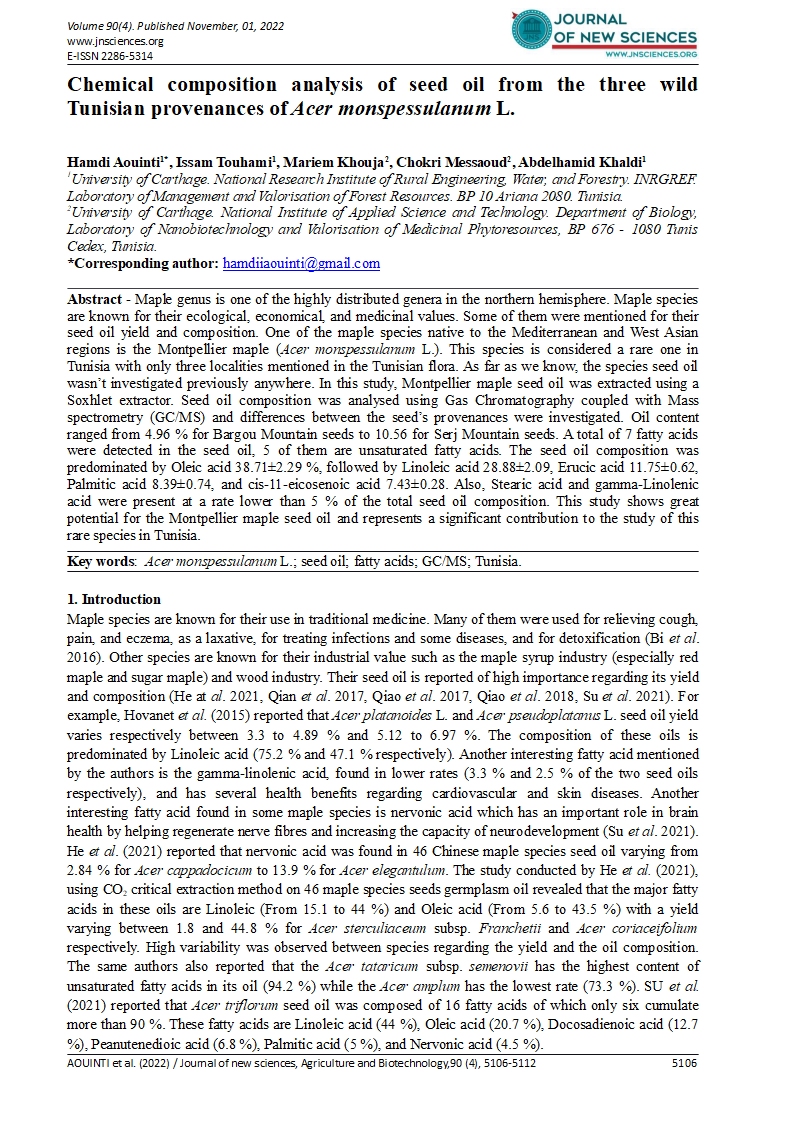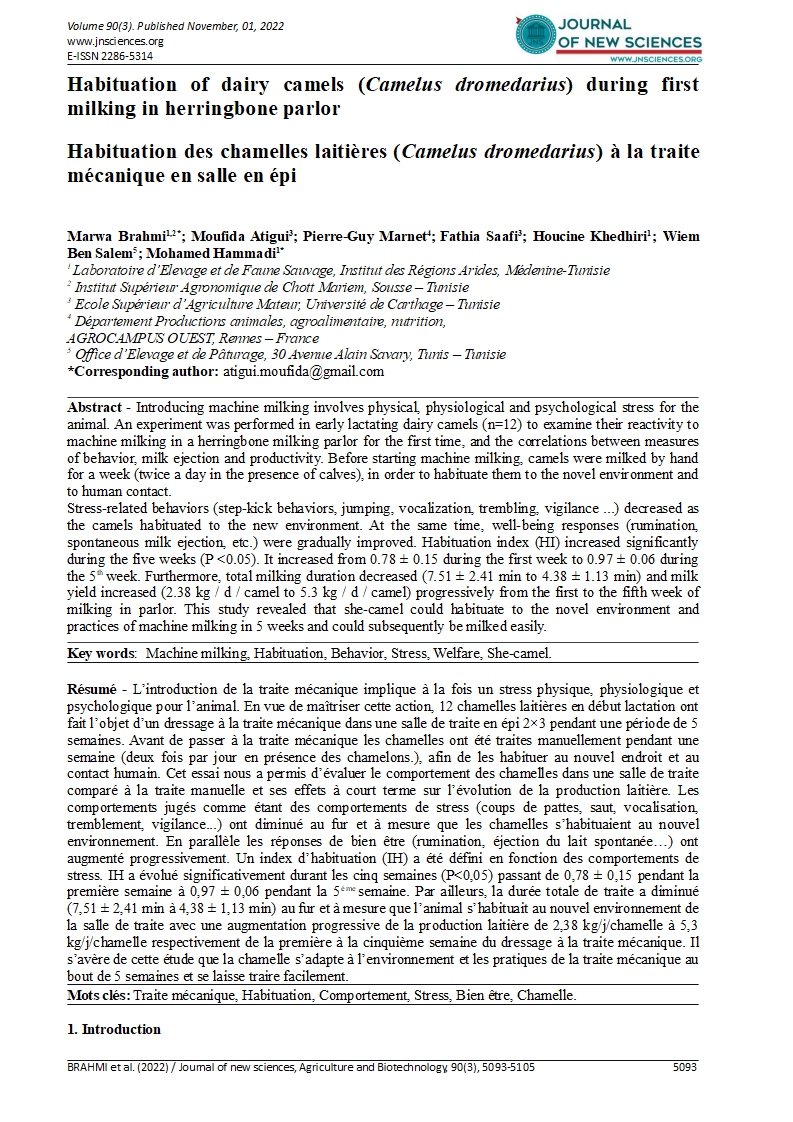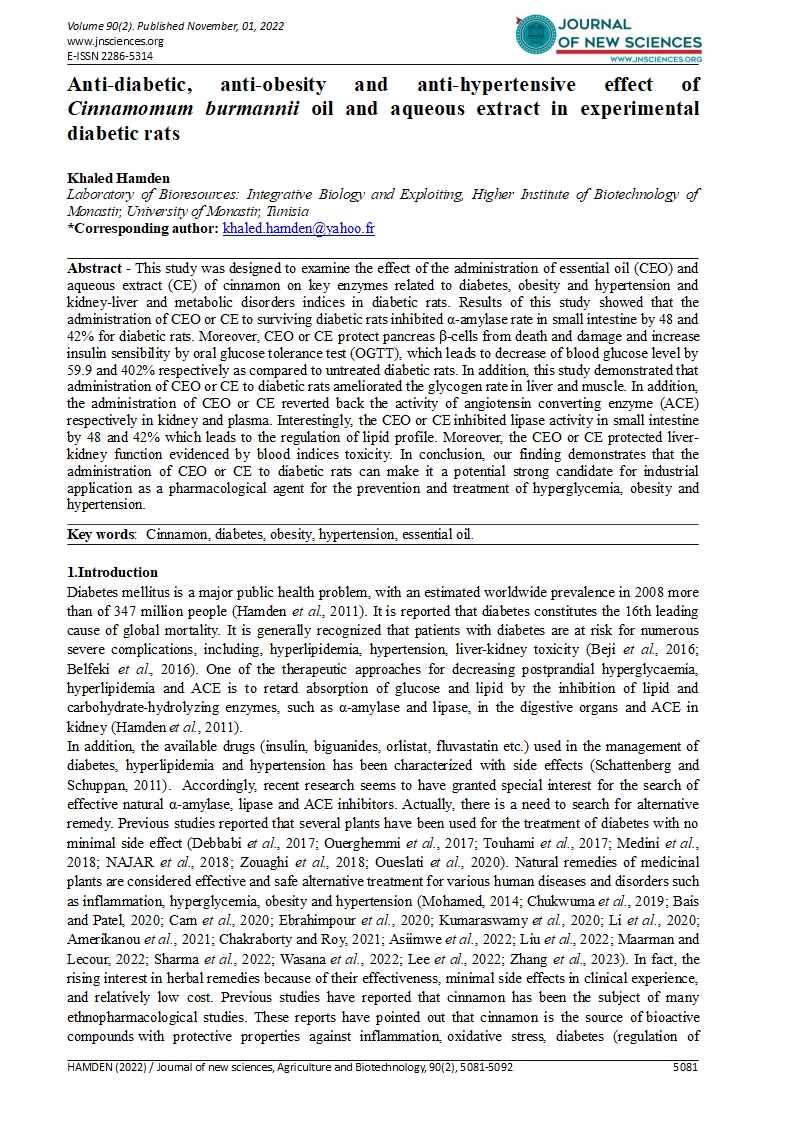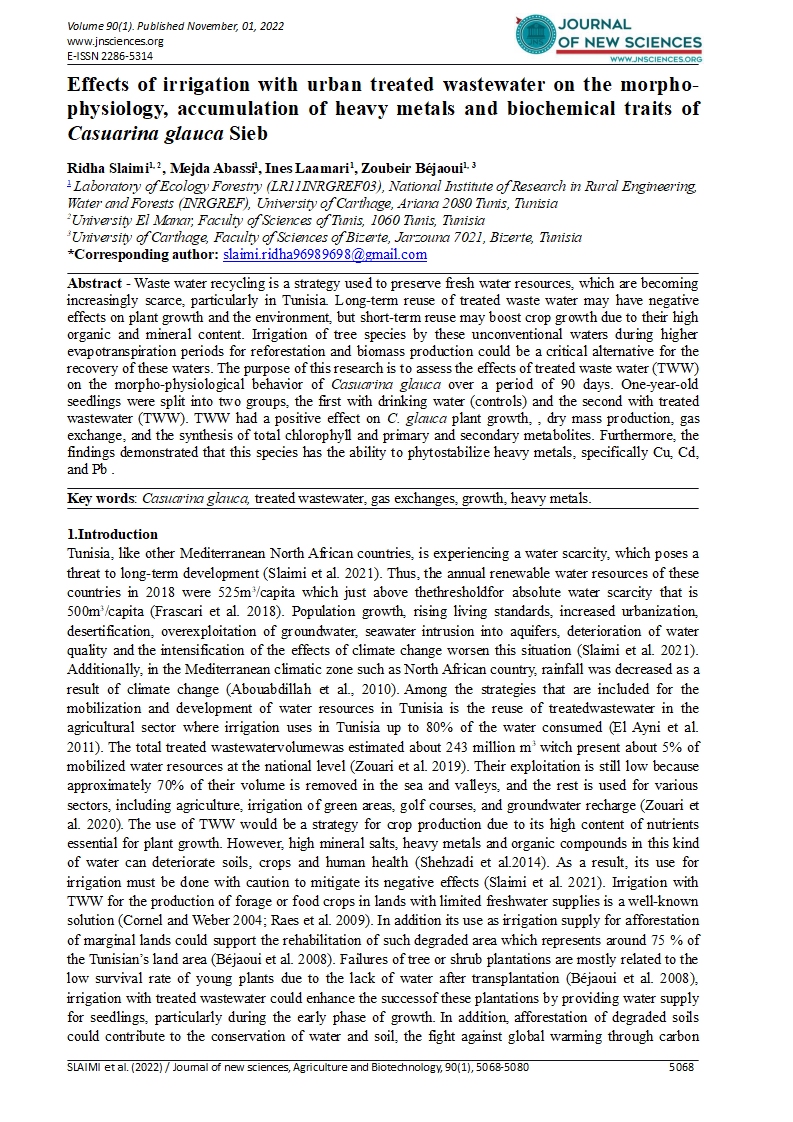- Category: Volume 90
- Hits: 1649
Fatty acid composition, phytochemical constituents and antioxidant activity of olive (Olea europea L.) leaves extract
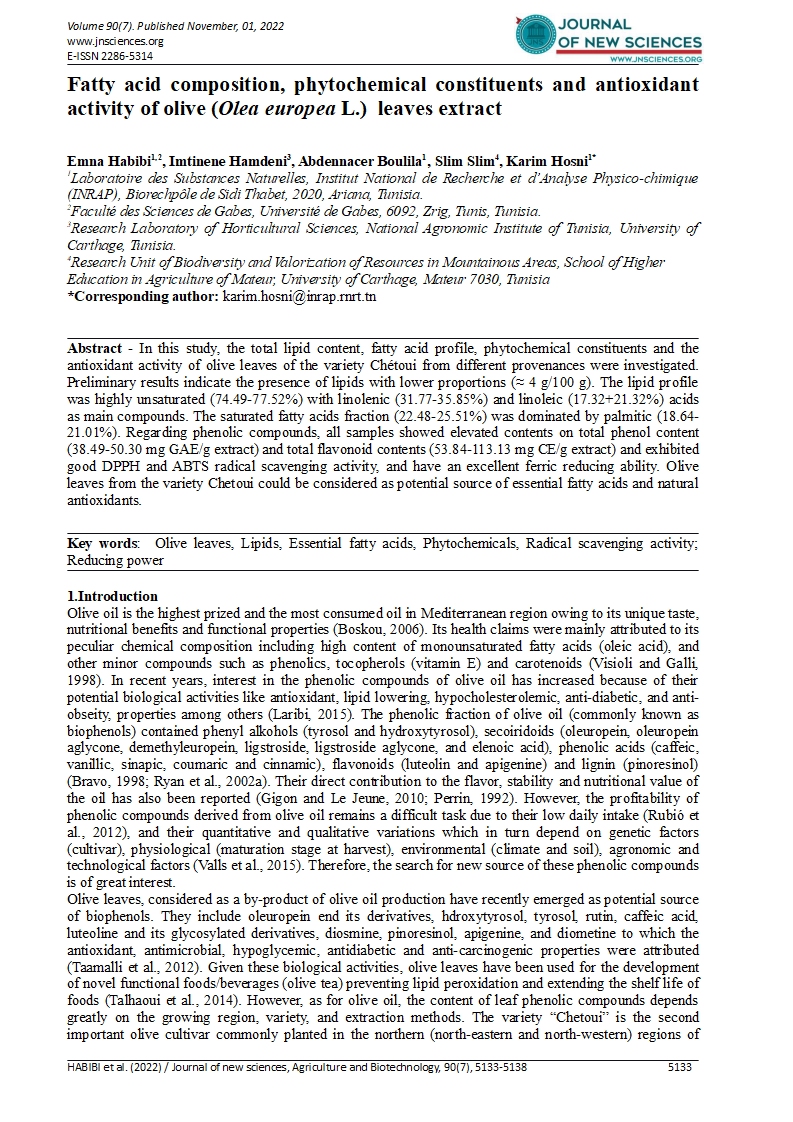
Emna Habibi1,2
Imtinene Hamdeni3
Abdennacer Boulila1
Slim Slim4
Karim Hosni1*
1Laboratoire des Substances Naturelles, Institut National de Recherche et d’Analyse Physico-chimique (INRAP), Biorechpôle de Sidi Thabet, 2020, Ariana, Tunisia.
2Faculté des Sciences de Gabes, Université de Gabes, 6092, Zrig, Tunis, Tunisia.
3Research Laboratory of Horticultural Sciences, National Agronomic Institute of Tunisia, University of Carthage, Tunisia.
4Research Unit of Biodiversity and Valorization of Resources in Mountainous Areas, School of Higher Education in Agriculture of Mateur, University of Carthage, Mateur 7030, Tunisia
DOI: https://doi.org/10.55416/sunb.jns01.2211.09007
Abstract - In this study, the total lipid content, fatty acid profile, phytochemical constituents and the antioxidant activity of olive leaves of the variety Chétoui from different provenances were investigated. Preliminary results indicate the presence of lipids with lower proportions (≈ 4 g/100 g). The lipid profile was highly unsaturated (74.49-77.52%) with linolenic (31.77-35.85%) and linoleic (17.32+21.32%) acids as main compounds. The saturated fatty acids fraction (22.48-25.51%) was dominated by palmitic (18.64-21.01%). Regarding phenolic compounds, all samples showed elevated contents on total phenol content (38.49-50.30 mg GAE/g extract) and total flavonoid contents (53.84-113.13 mg CE/g extract) and exhibited good DPPH and ABTS radical scavenging activity, and have an excellent ferric reducing ability. Olive leaves from the variety Chetoui could be considered as potential source of essential fatty acids and natural antioxidants.
Key words: Olive leaves, Lipids, Essential fatty acids, Phytochemicals, Radical scavenging activity; Reducing power

